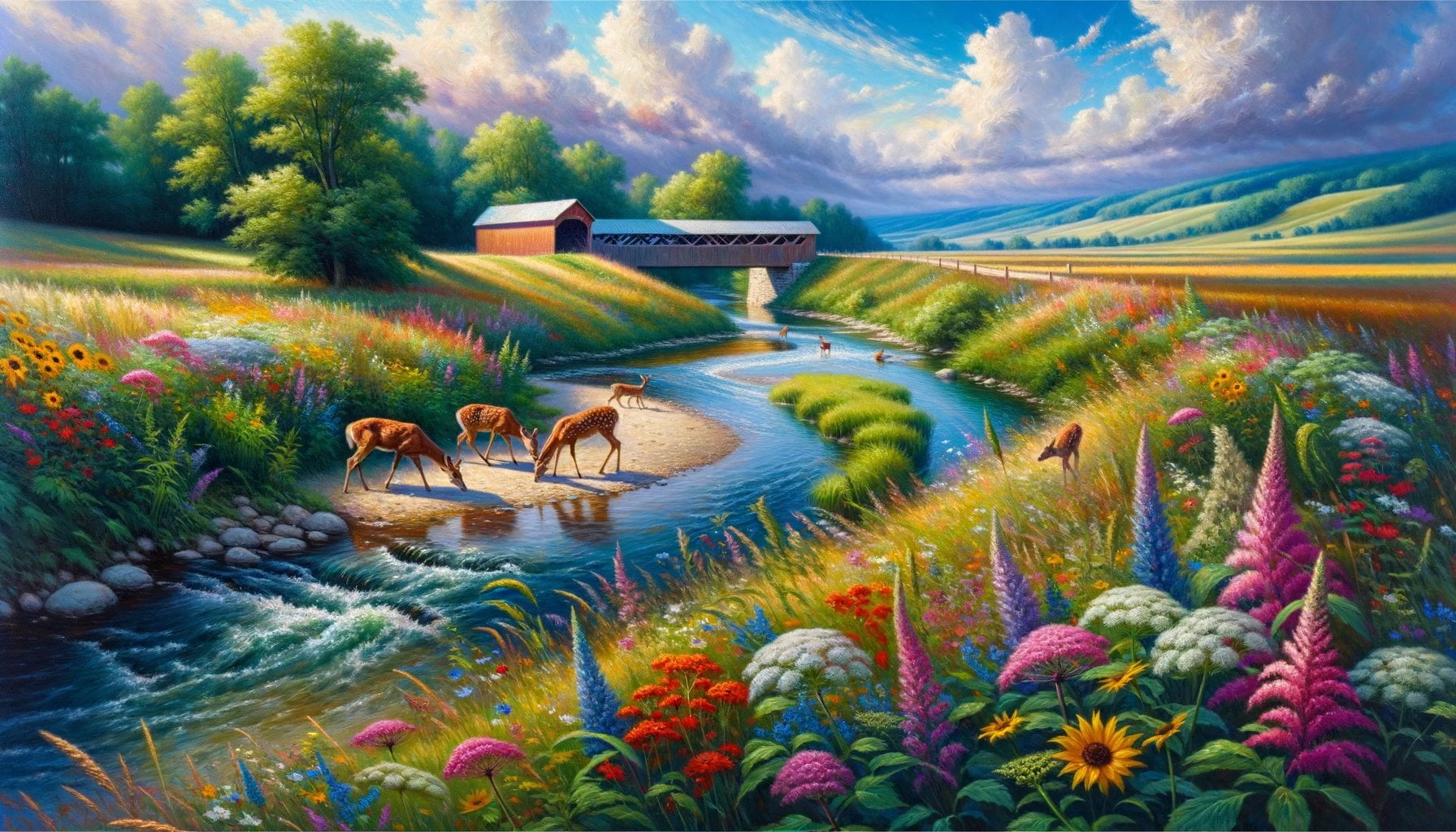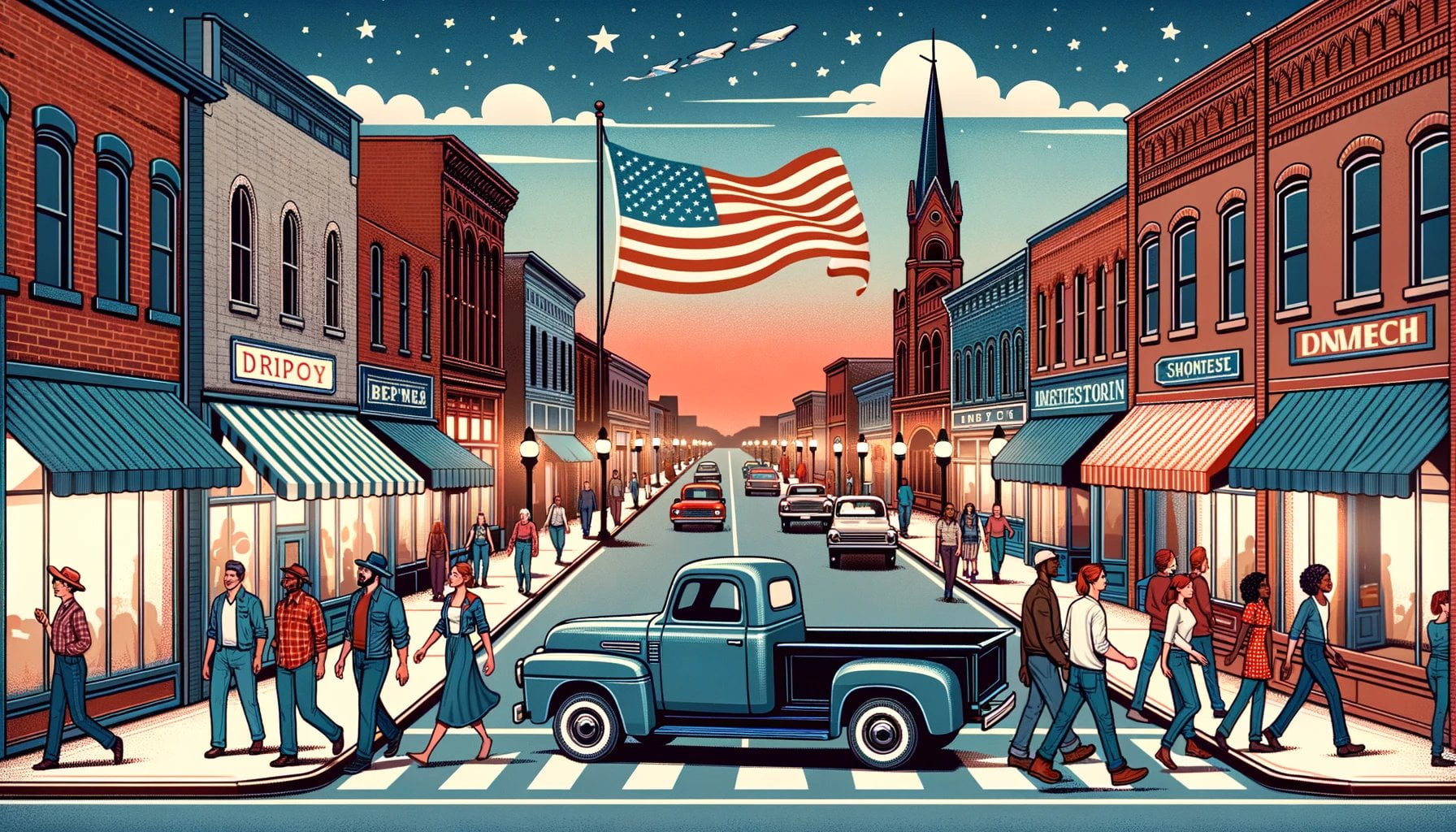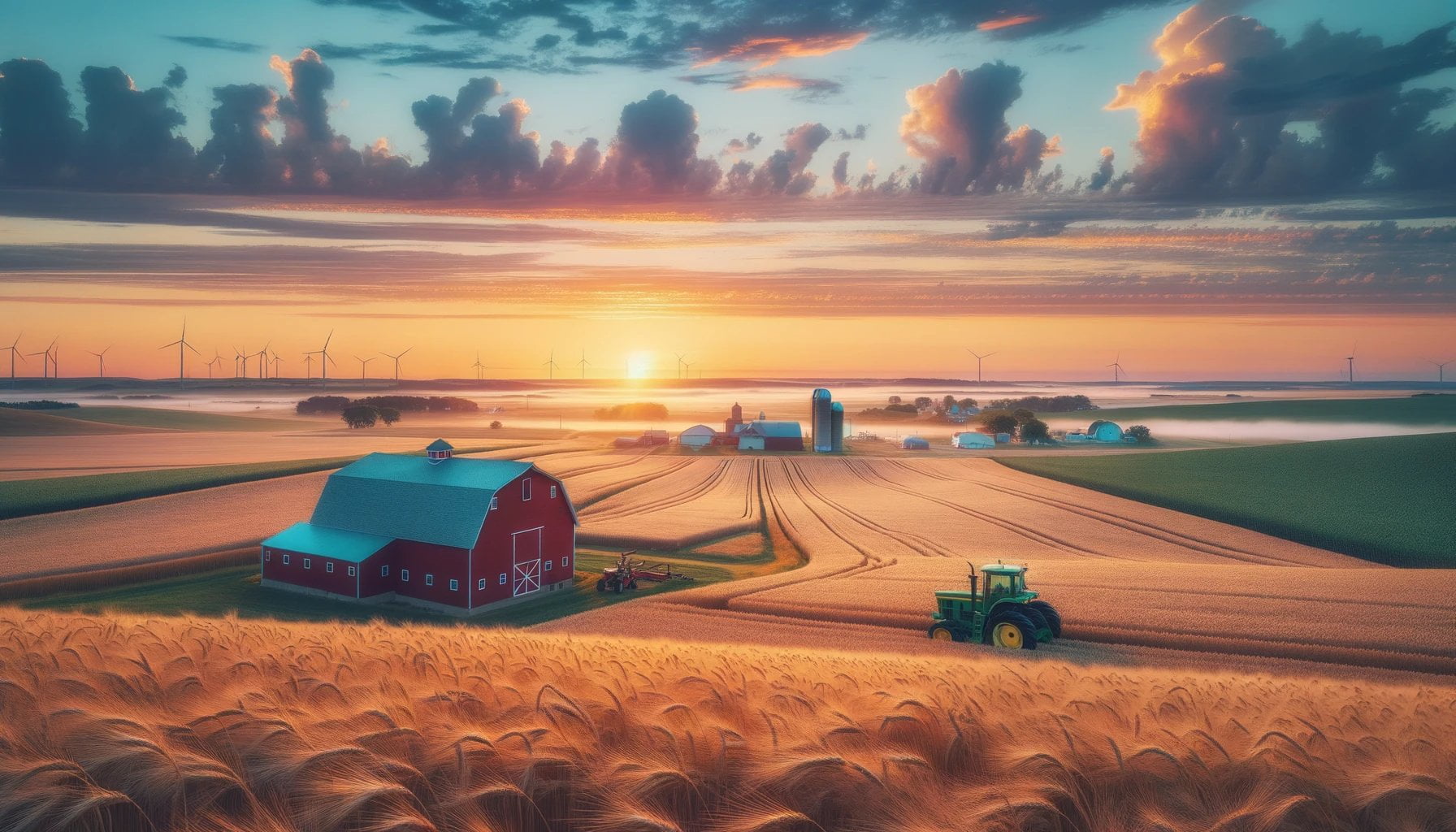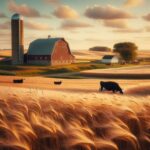Unveiling the hidden treasures of the United States, our journey takes us to the Midwest, a region brimming with unpretentious charm and unique qualities. As seasoned travel writers, we have dedicated ourselves to capturing the essence of this enchanting area, showcasing its lesser-known attractions, rich cultural heritage, and unparalleled hospitality. With stories that transport readers to the heart of the Midwest, we delve into its distinctive qualities, unraveling a tapestry of authenticity that sets it apart from the rest. Join us as we embark on a captivating exploration of the Midwest’s unpretentious charm, uncovering the secrets that make it a true gem waiting to be discovered.

Key Takeaways:
- The Midwest is distinguished by its unique culture, lifestyle, and geography.
- The region is known for its friendly people, relaxed pace of life, and affordable land.
- Caribou Coffee, a popular chain in the Midwest, offers delicious coffee.
- Residents in the Midwest are accustomed to navigating freezing temperatures and snow.
- The Northern Lights can be observed in the Midwest, providing a natural spectacle.
- Summer bike rides and amusement parks are beloved activities in the region.
- Some towns in the Midwest resemble European cities, enhancing the region’s distinctive charm.
What is unique about Midwest?
The Midwest region of the United States holds a captivating charm that sets it apart from the rest of the country. With its distinct culture, friendly people, and picturesque landscapes, the Midwest offers a treasure trove waiting to be discovered. So, what makes this region unique? Let’s explore its remarkable qualities together.
1. A Melting Pot of Culture
The Midwest is a true melting pot of cultures, with diverse communities that have shaped its identity. From the German heritage in Wisconsin’s Milwaukee to the rich Czech traditions in Nebraska, the Midwest embraces its cultural roots with pride. This unique blend of influences can be seen in the region’s architecture, festivals, and even its flavorful cuisine. Whether you’re exploring the Scandinavian heritage in Minnesota or enjoying the vibrant Mexican traditions in Chicago, the Midwest offers an authentic cultural experience that is truly unmatched.
2. The Unpretentious Charm
One of the Midwest’s most endearing qualities is its unpretentious charm. Unlike the bustling metropolises of the East and West coasts, the Midwest delights in its down-to-earth simplicity. Here, the pace of life is refreshingly relaxed, and people take the time to connect and appreciate the little things. The friendly locals will welcome you with open arms and genuine hospitality, making you feel right at home. It’s this warmth and unassuming nature that sets the Midwest apart and leaves a lasting impression on all who visit.
3. Breathtaking Landscapes
The Midwest is home to some of the most breathtaking landscapes in the United States. From the rolling plains of Kansas and the expansive fields of Iowa to the majestic beauty of the Great Lakes, the region offers a diverse range of natural wonders. Picture yourself exploring the serene beauty of the Badlands in South Dakota or marveling at the towering bluffs along the Mississippi River. The Midwest’s landscapes showcase the unspoiled beauty of nature and offer endless opportunities for outdoor adventures and exploration.
4. Rich History
Delving into the Midwest’s rich history is like stepping back in time. From the Native American cultures that shaped the land to the pioneers who forged a path across this vast region, the Midwest has an intriguing story to tell. Explore historic sites like the Gateway Arch in St. Louis or visit the legendary Field of Dreams in Iowa. The Midwest’s history is intertwined with the growth of the nation, and the region holds a wealth of stories just waiting to be discovered.
5. Quaint Towns and Charming Cities
In the Midwest, you’ll find an abundance of quaint towns and charming cities that are reminiscent of a bygone era. Some towns even resemble picturesque European cities, with their cobblestone streets, charming architecture, and welcoming community squares. Take a stroll through the historic streets of Galena, Illinois, or admire the Victorian charm of Mackinac Island in Michigan. The Midwest’s towns and cities offer a delightful blend of old-world charm and modern amenities, creating a unique atmosphere that is hard to resist.
Conclusion
The Midwest is a region that captivates with its unique qualities. Its rich cultural heritage, unpretentious charm, breathtaking landscapes, and historic sites make it a hidden gem waiting to be explored. Whether you’re seeking outdoor adventures, fascinating history, or simply a peaceful retreat, the Midwest offers something for everyone. So, pack your bags and embark on a journey to uncover the unpretentious charm of the Midwest and experience its unparalleled hospitality firsthand.
The Midwest region is full of fascinating facts! Did you know that the Midwest is known for its agriculture and rich farming history? Learn more about 4 facts about the Midwest region.
Check out our article here to discover these intriguing facts!
Historical Significance
The Midwest region of the United States holds a rich historical significance that has shaped the nation and continues to influence its development. From its unique economic and cultural history to its notable landmarks and commitment to historical preservation, the Midwest’s historical significance is undeniable. Let’s explore some key aspects that highlight the region’s historical importance.
A Fusion of Urban Industrial Establishment and Rural Conservatism
The Midwest is known for its distinctive blend of urban industrial establishment and rural conservatism. This fusion has had a significant impact on national life, making the region an important center for social and political movements. The Granger movement, which advocated for the rights of farmers, found its main base of activity in the Midwest. Additionally, the labor movement, fighting for workers’ rights, was also centered in this region. The Midwest also served as a home for many famous industrial giants and played a vital role in architectural and retailing innovation.
Unique National Historic Sites and Landmarks
The Midwest boasts numerous unique national historic sites and landmarks that showcase its historical significance. From the Blue Earth County Courthouse in Mankato, Minnesota, to Bear Butte in Meade County, South Dakota, and the Chicago Theatre in Chicago, Illinois, these sites offer a glimpse into the region’s vibrant history. Other notable landmarks include Chimney Rock in Nebraska, Tyler Davidson Fountain in Ohio, Grotto of The Redemption in Iowa, and the Gateway Arch in Missouri. Each of these landmarks has played a significant role in shaping the history and culture of the Midwest.
Preserving and Promoting Midwestern History
Midwestern history is far from being merely a thing of the past. Historians and organizations in the region actively work to combat stereotypes and preserve its rich heritage. The Midwest’s commitment to state and local history is evident through various historical societies and organizations. The Prairie Historians, for example, focus on topics like colonial settlement and the social and ethnic history of the Midwest, shedding light on lesser-known aspects of the region’s past. These efforts ensure that the history of the Midwest remains relevant and alive, and help dispel misconceptions about the region.
Cultural Landscapes Reflecting Settlement, Exploration, and Transportation
The cultural landscapes of the Midwest are of immense significance in understanding the region’s history. These landscapes encompass themes of settlement, exploration, and transportation that have played a crucial role in shaping the Midwest. The region boasts five national parks, including Indiana Dunes National Park, Isle Royale National Park, Gateway Arch National Park, Cuyahoga Valley National Park, and Theodore Roosevelt National Park. Each of these parks offers visitors a chance to explore and appreciate the cultural and historical fabric of the Midwest.
Overall, the Midwest’s historical significance is evident in its unique blend of urban and rural influences, its notable landmarks, and its commitment to preserving and promoting its rich history. From social and political movements to the preservation of historical sites and cultural landscapes, the Midwest offers a treasure trove of historical significance waiting to be discovered.
Key Takeaways:
- The Midwest is known for its fusion of urban industrial establishment and rural conservatism, which has influenced national life and important social and political movements.
- The region boasts unique national historic sites and landmarks that showcase its historical significance, such as the Blue Earth County Courthouse and the Gateway Arch.
- Historians and organizations in the Midwest actively work to combat stereotypes and preserve the region’s rich heritage, ensuring its history remains relevant today.
- The cultural landscapes of the Midwest reflect themes of settlement, exploration, and transportation and are captured in national parks like Indiana Dunes and Cuyahoga Valley.
- The historical significance of the Midwest permeates various aspects of its culture, making it a fascinating region to explore.
Sources:
- Encyclopedia Britannica: Midwest | History, States, Map, Culture, & Facts | Britannica
- WorldAtlas: 10 Unique National Historic Sites of the United States: Midwest
- AHA: Midwestern History Is on the Map | Perspectives on History | AHA
- U.S. National Park Service: Cultural Landscapes of the Midwest – U.S. National Park Service
Thriving Agriculture in the Midwest
The Midwest region of the United States is not only known for its unpretentious charm and picturesque landscapes but also for its thriving agriculture industry. This vast area boasts fertile lands and favorable conditions that contribute significantly to the nation’s agricultural economy. Let’s delve deeper into why the Midwest stands out when it comes to thriving agriculture.
Rich Diversity and Contribution
The Midwest region encompasses various subregions, including the Corn Belt, Lake States, and Northern Plains, each with its own unique agricultural practices and specialties. This diversity plays a key role in the Midwest’s thriving agricultural industry, contributing over $152 billion to the U.S. agricultural economy[^1^].
A significant amount of cropland in the Midwest, accounting for 25% of the region’s total, is dedicated to the production of specialty crops such as alfalfa, oats, tobacco, and wheat[^1^]. It’s worth noting that the Midwest is home to a wide variety of both annual and perennial specialty crops, further enhancing its agricultural landscape.
Corn and Soybeans: The Cornerstones
When it comes to commodity crops, corn and soybeans take center stage in the Midwest. These crops are grown on a staggering 75% of the region’s arable land and are integral to the Midwest’s agricultural success[^1^]. The region’s fertile lands and ideal weather conditions make it a prime location for the cultivation of these essential commodities.
Embracing Specialty Crops
While corn and soybeans dominate, the Midwest is also seeing a rise in specialty crops with higher values, adding diversity and economic vibrancy to the region. The cultivation of apples, grapes, cherries, cranberries, blueberries, and pumpkins is gaining momentum across the Midwest[^1^]. These crops not only contribute to the region’s agricultural revenue but also offer unique and locally-sourced produce for consumers to enjoy.
Dairy Excellence
Apart from crop production, the Midwest is renowned for its dairy industry. This region produces 15% of the country’s dairy products[^1^]. The vast expanse of lush pastures and the availability of ample water sources contribute to the success and excellence of dairy farming in the Midwest.
Digging Deeper into Thriving Agriculture
To truly appreciate the Midwest’s thriving agriculture, it’s crucial to explore the specific nuances and subregions that contribute to its success. From the vast cornfields and soaring soybean crops in the Corn Belt to the bountiful dairy farms and specialty crop production in other parts of the Midwest, this region offers a wide array of agricultural wonders.
Key Takeaways:
- The Midwest region contributes over $152 billion to the U.S. agricultural economy[^1^].
- Specialty crops like alfalfa, oats, tobacco, and wheat are cultivated on approximately 25% of Midwest cropland[^1^].
- Corn and soybeans are the main commodity crops, grown on 75% of the region’s arable land[^1^].
- The Midwest is seeing an emergence of specialty crops such as apples, grapes, cherries, cranberries, blueberries, and pumpkins[^1^].
- The region produces 15% of the country’s dairy products and has a thriving dairy industry[^1^].
Sources:
– Midwest Climate and Specialty Crops
– Midwest Agriculture – AgAmerica
[^1^]: USDA. Midwest Climate and Specialty Crops. source
Uncovering the Unpretentious Charm of the Midwest: Exploring Its Unique Qualities
The Midwest region of the United States is a hidden treasure, offering a distinctive charm that sets it apart from other destinations. With its warm hospitality and unpretentious allure, the Midwest provides a truly unique experience for visitors and locals alike. Let’s dive into what makes this region so special and discover the hospitality and charm it has to offer.
The Warm Welcome and Genuine Hospitality
One of the standout qualities of the Midwest is its warm and welcoming atmosphere. The people of the Midwest are known for their friendly nature and genuine hospitality, making visitors feel right at home. Whether you’re exploring small towns or bustling cities, you’ll encounter locals who go out of their way to make you feel welcome. Their genuine kindness and helpfulness create an inviting environment that leaves a lasting impression.
Charming Small Towns and Scenic Beauty
The Midwest is dotted with picturesque small towns that exude charm and tranquility. These hidden gems offer a glimpse into a simpler way of life and provide a serene backdrop for any visit. From Sorrow Falls in Ohio to Galena in Illinois, these towns capture the essence of the Midwest’s unpretentious charm. With their scenic views, gourmet dining, and rich history, these small towns are like stepping into a bygone era.
Stunning Landscapes and Natural Wonders
The Midwest is blessed with breathtaking landscapes that showcase the region’s natural beauty. From the majestic bluffs to the rolling plains, the Midwest’s diverse geography never fails to impress. One of the region’s notable natural wonders is Geneva Lake in Wisconsin, renowned for its serene beauty. The Great Lakes, with their vast expanses of water, add to the Midwest’s charm and offer a host of recreational activities for visitors to enjoy.
Rich Cultural Heritage and Unique Experiences
The Midwest embraces its cultural heritage with pride, seen in its architecture, festivals, and cuisine. This region is a melting pot of diverse communities, each contributing to its vibrant identity. From German beer festivals in Wisconsin to Scandinavian heritage in Minnesota, the Midwest’s cultural tapestry is rich and varied. Whether you’re exploring historical landmarks, visiting museums, or indulging in local delicacies, the Midwest offers unique experiences that will leave you with a newfound appreciation for its heritage.
Affordable Cost of Living and Relaxed Pace of Life
In addition to its charm and hospitality, the Midwest boasts an affordable cost of living and a relaxed pace of life. The region’s cities and towns offer a comfortable and welcoming environment without the hustle and bustle of larger metropolitan areas. This laid-back lifestyle allows visitors to truly immerse themselves in the Midwest’s charm and take the time to appreciate its hidden treasures.
Key Takeaways:
- The Midwest region of the United States is known for its warm hospitality and unpretentious charm.
- Small towns in the Midwest offer a serene backdrop for those seeking a peaceful retreat.
- The stunning landscapes, including the Great Lakes and rolling plains, add to the region’s beauty.
- The Midwest’s cultural heritage is rich and diverse, expressed through its architecture, festivals, and cuisine.
- The region’s affordable cost of living and relaxed pace of life create a comfortable and inviting atmosphere.
Sources:
1. My Global Viewpoint: Most Beautiful Places In The Midwest
2. The Culture Trip: The Most Beautiful Towns In The Midwest

FAQ
Q1: What makes the Midwest unique compared to other regions in the United States?
A1: The Midwest stands out for its distinct culture, lifestyle, and geography. It is characterized by friendly people, a stress-free pace of life, and cheap land. Additionally, the region experiences freezing temperatures and snow, which residents have learned to navigate. The Midwest is also known for its unique blend of urban industrial establishment with rural conservatism.
Q2: What are some popular activities in the Midwest?
A2: The Midwest offers a range of popular activities, such as summer bike rides and visits to amusement parks. The region is known for its scenic landscapes, making it a great destination for outdoor enthusiasts.
Q3: Are there any unique landmarks or natural wonders in the Midwest?
A3: Yes, the Midwest is home to several unique landmarks and natural wonders. Visitors and locals alike can experience the beauty of the Northern Lights in the region. Additionally, some towns in the Midwest resemble European cities, adding to the region’s unique charm.
Q4: What is the historical significance of the Midwest?
A4: The Midwest has a rich history and cultural heritage, with unique landmarks and a significant influence on national development. The region’s commitment to state and local history is evident through various historical societies and organizations. Midwestern history is still relevant today, with historians trying to combat stereotypes of the Midwest as a bland and featureless place.
Q5: What is the significance of agriculture in the Midwest?
A5: Agriculture is a vital part of the Midwest’s identity. The region is known for its intensive and diverse agricultural production, including corn-soybean, specialty crops, forage and grasslands, forests, and animal production systems. With its fertile lands and waters, the Midwest contributes significantly to the U.S. agricultural economy and produces a wide variety of crops such as corn, soybeans, wheat, dairy products, and an increasing number of specialty crops.












